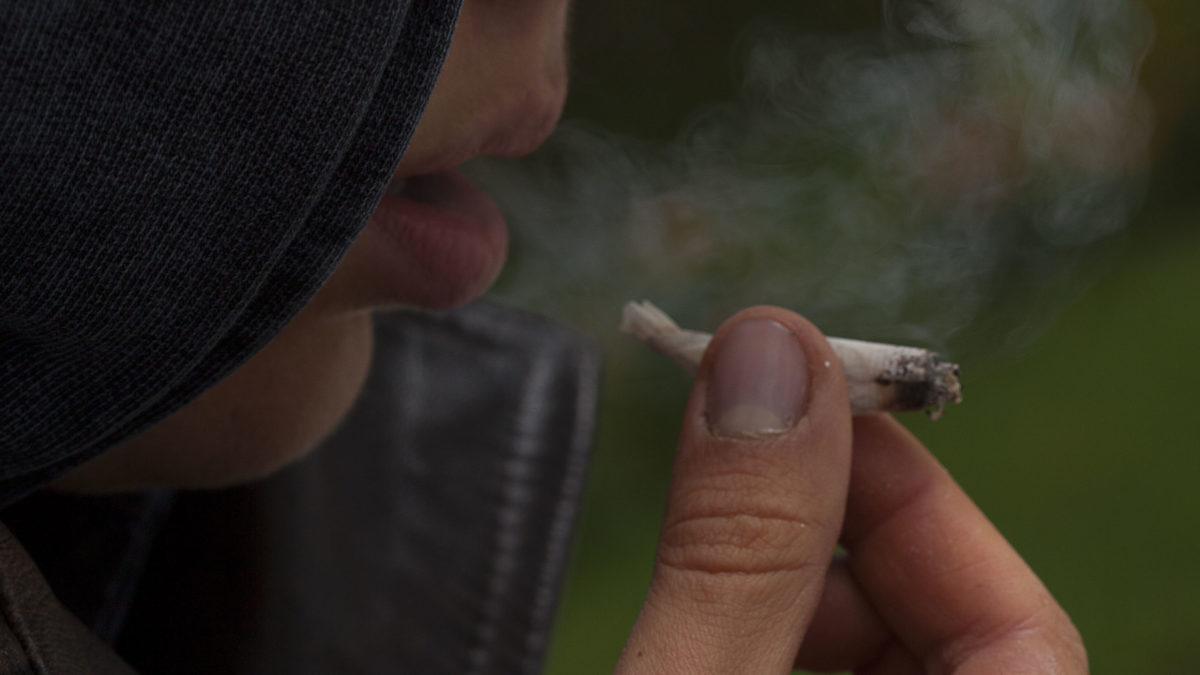Teen Use of Nearly All Illicit Drugs Declined Again This Year
Pot possession becomes legal for adults today in Massachusetts — another sign of Americans’ growing acceptance of recreational marijuana use despite federal drug law.

Public health advocates have worried that the emergence of legalized marijuana in many states would lead to increased use by teens. That doesn’t seem to be the case.
Visual: iStock.com
The Bay State joins seven other U.S. states and Washington, D.C., where recreational pot is okay or will be by early next year. Medical marijuana is now legal in 21 states.
Some critics have worried that legal pot, whether recreational or medical, would lead to more kids smoking or consuming it in other ways. But that concern is unsupported according to the the most recent findings, released Tuesday, of a large annual study of teen use of illicit substances.
The annual Monitoring the Future study conducted by the University of Michigan’s Institute for Social Research found that self-reported use of any marijuana in the previous 12 months went down among 8th- and 10th-graders compared with 2015 data (although the drop among 10th-graders is not statistically significant).
Usage has been declining gradually among 8th-graders since 2010 and dropping sharply among 10th-graders since 2013, says the study’s principal investigator Lloyd Johnston, a senior research scientist at the University of Michigan.
Self-reported marijuana use in the previous 12 months among 12th-graders has remained steady at about 36 percent since 2011.
Use of all other drugs studied by the team also decreased in the past year in the nationally representative sample—with the exception of 8th-graders’ use of a synthetic stimulant called bath salts.
The study group included about 45,000 students in public and private secondary schools. The research is funded by the National Institute on Drug Abuse. The report will be published on the project’s web site in January.
Teen use of the most widely used illicit substances other than marijuana has trended down for several years or for two decades in some cases, says Johnston, who has led the study for more than four decades.
The illicit substances covered by the Monitoring the Future study for the past several years include alcohol, prescription amphetamines and narcotics outside of medical supervision (the latter has been surveyed only among 12th-graders), cigarettes, e-cigarettes, heroin, ecstasy (aka MDMA and Molly), synthetic marijuana (aka K-2 or Spice), cocaine, crack, sedatives and inhalants.
“The dramatic decline in cigarette smoking in teens going on for some years, in terms of health and longevity, is probably the most important,” Johnston says.
Few major media outlets covered this news amidst the national political drama.
“In all 42 years that we’ve been doing this study, I don’t know that I can ever recall when nearly all substances that we follow are in decline,” says Johnston.
Teens are becoming more aware of the risks of drinking alcohol and using drugs, he says, and drugs and booze have become less acceptable overall in this age group.
Long-term trends suggest that alcohol and cigarettes, not marijuana, are the gateway drugs or stepping stones to use of so-called harder substances.
The stepping-stone hypothesis is controversial and cannot be tested scientifically because it is unethical to start naïve subjects on drugs or drinking. And there is no way to prevent users in an experiment from knowing which drugs they are using. “So, [the hypothesis] has remained an open question, but this is starting to make it look like there is something to that,” Johnston says.
On Tuesday President Obama signed into the law the 21st Century Cares Act, which will allocate $1 billion in grants to states for the treatment and prevention of prescription drug abuse. One hope is that the funding will help curtail the nation’s growing prescription narcotic problem — among adults and teens.










